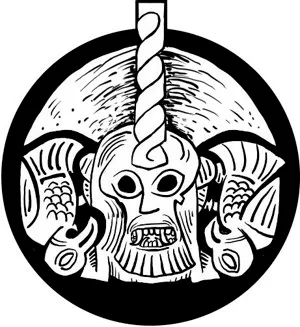Seems I have gotten myself into a both interesting and inexhaustible topic. Yesterday I wrote an answer to a question by @roused which became quite long: An answer to a question by Roused. I think you should read it if any of this shall give any sense, but the question was:
Is it like that with you and drawing, are you able to draw your thoughts, or is it just a close approximation?
I posted a link on Diaspora my other social media and I got some new question from a user called Bo.
Here are Bo's questions:
some random questions occurred to me while reading this:
If you can “draw a thought”, then what is this thought then?
Is it literally a thought? https://en.wikipedia.org/wiki/Thought
Or is it an idea? https://en.wikipedia.org/wiki/Idea
Or is it a mental image? https://en.wikipedia.org/wiki/Mental_image
Another random thought: If it is a mental image, then what happens if you have “aphantasia”? https://en.wikipedia.org/wiki/Aphantasia
It seems that people with aphantasia can make visual art, but then the question is how they translate this, supposedly non-visual thought into a visual expression.
Personally I can have pretty vivid music ideas (images) in my head, but do not have nearly enough skill to express them.
Here's my answer
I am not sure I see a big difference between a thought and a mental image - I can see them apart, but there it is a strangely blurry border between them. Ideas are somehow a later stage, a sort of construction on top of the thought or the image. The idea (as I understand it) can involve reasons and that is not what I am after.
As soon as the brush touches the paper, the first note is heard, or the words are uttered inside the head of the author, there is a physical or mental feedback. You react to this immediately and the more trained you are the more automatic is the reaction. If you play a flute you will adjust the tone with your mouth to be in tune. This happens by muscle-memory and is mostly subconscious. But if concentrating you will also be able to make more conscious decisions based on the feedback. For a pictorial artist this is of course done by running many mental images through a process that at the same time register what is actually happening at the paper... I would call that thought, but not a very word dependent one (it is partly). If you compares to music it is exactly the same thing that happens. As much as you concentrate on getting it right, you also let go of control and let the feedback guide you. It is a strange process and very hard to explain, but I think you know it somehow from music. (I am an amateur musician and know exactly when I am not able to express myself in music.)
From this Ideas will arise too. You just played a good phrase in your jazz improvisation and then you take it and transcribe it a quarter, plays the same phrase in minor instead of major etc.
A strange fact is that as an artist you somehow always will have to fight your ability and technique, as it has a tendency to automate your responses to the feedback. You start drawing the same things over and over again, perfect maybe, but without nerve. In a good session you let go of this tool box and swim through the music, in a bad one you fall back to all the old muscle-memory phrases you have learned. In ink drawing and jazz-improvisation nobody is in doubt if it is one or the other, while recorded music, composition and complex painting you can of course edit later. The process remains the same none the less.
I think this is how I will explain it.
As for aphantasia I have no idea :) I have a hard time imagine it.
Try to look at this. Forget about what he says and see how his head moves.
P.S.
I think this is also the reason that drawings made by children at the age of 3-4 year are always so good. They do not have a toolbox, but they finally have the motor skills and the concentration and they are in a learning period of their life so they do not have the inhibitions and conventions that plague humans at older age.


